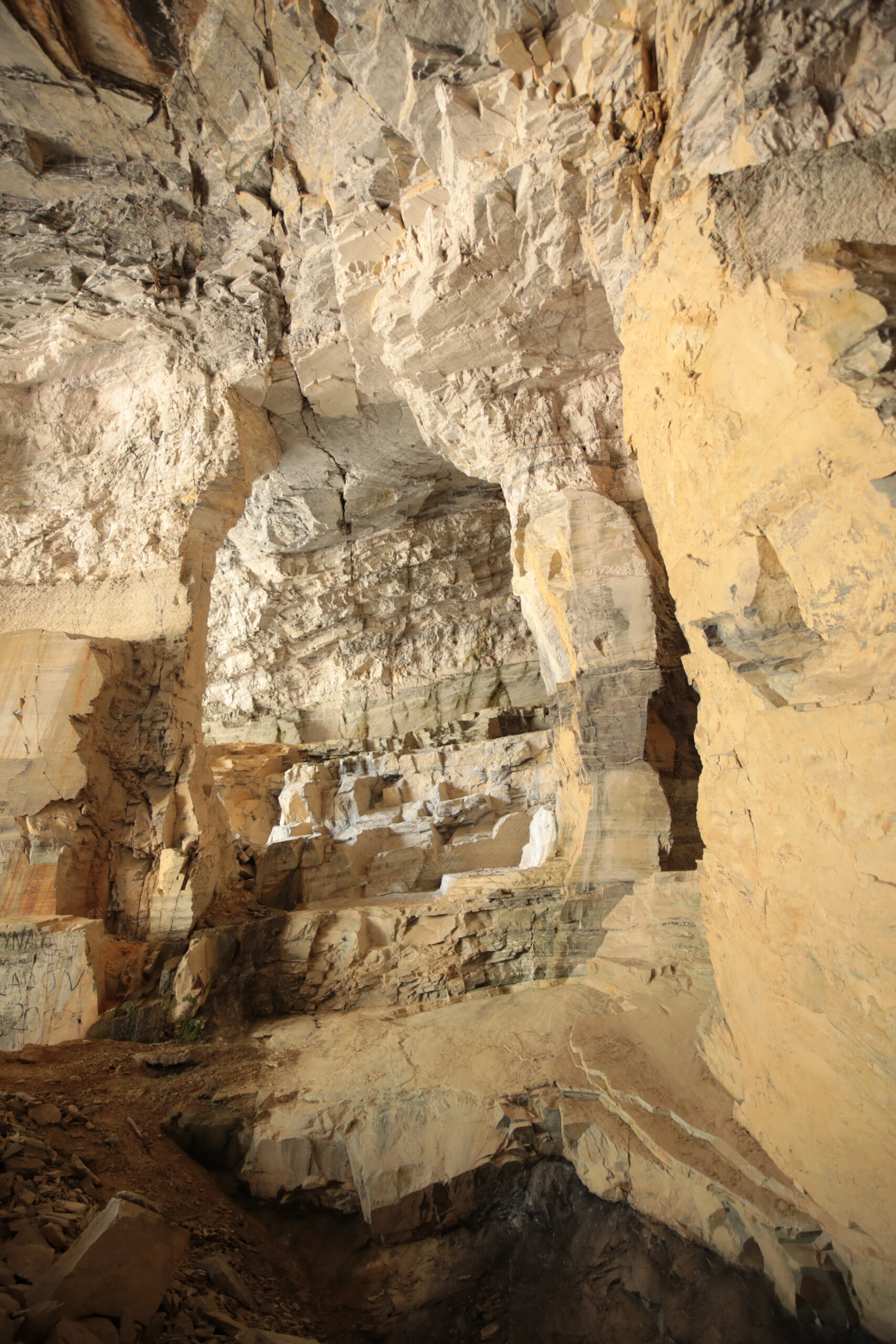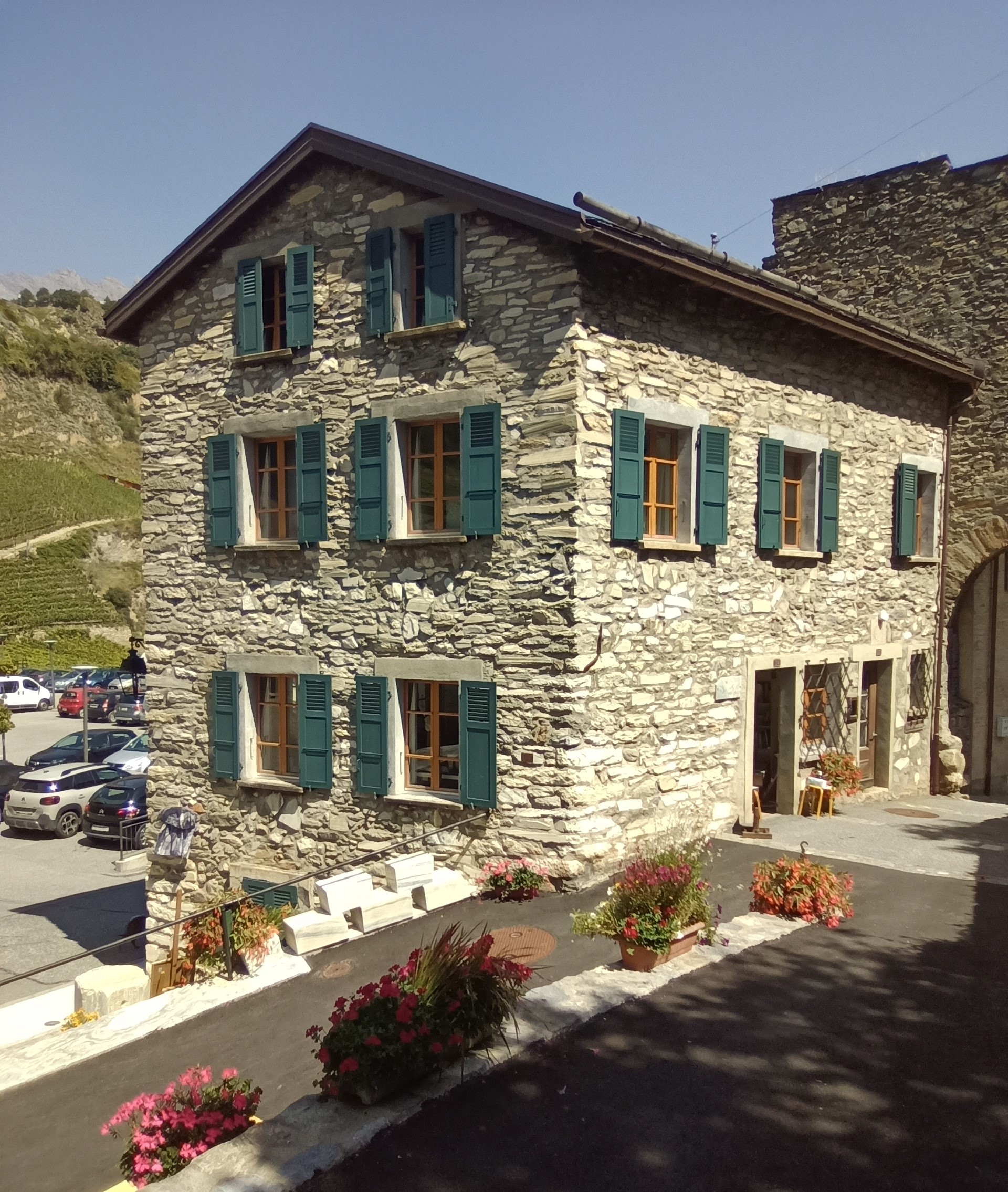With a name derived from the Italian for onion (cipolla), Saillon’s veined cipolin marble has been worked by hand since the 19th century. Commercial exploitation of Saillon’s quarries brought the village to international attention.
White and blue (turquin) marble has been extracted from the mountain since 1832. However, it was not until late in 1873 that the famous green-and-violet-veined cipolin marble was discovered. Twenty-five companies from the Valais and Europe exploited Saillon’s quarries until 1930.
A funicular railway to transport blocks of marble
As the quarries are at an altitude of 1,000 metres, a funicular railway was built in 1880 to transport the blocks across the plain to the hamlet of La Sarvaz. The early 1960s saw Lathion S.A. install an aerial cableway to bring the marble down for use in floor tiles at a factory in Evionnaz. Commercial activities ceased in 1975.
Saillon marble at the Palais Garnier in Paris
Saillon marble may be found the world over. Numerous monuments in Switzerland, as well as in Europe and America, were built using cipolin marble extracted from the Saillon quarries. The architect Charles Garnier, for example, chose this stone to create the bases for several sculptures in the walls of the Palais Garnier in Paris.


La Maison du Marbre
2017 saw the Association des Amis du Marbre (AAM) [Friends of Marble Association] move into premises at rue Saint-Jacques 24 in the heart of the old medieval quarter. La Maison du Marbre [Marble House] houses a small library, items from the AAM’s collections or on loan from artists, a selection of the different varieties of Saillon marble, and an assortment of tools once used by the quarrymen.
The AAM offers visits on set dates to discover the history of marble. Walks to the quarries are organised three times a year, and the Marble House regularly opens its doors to the public.

